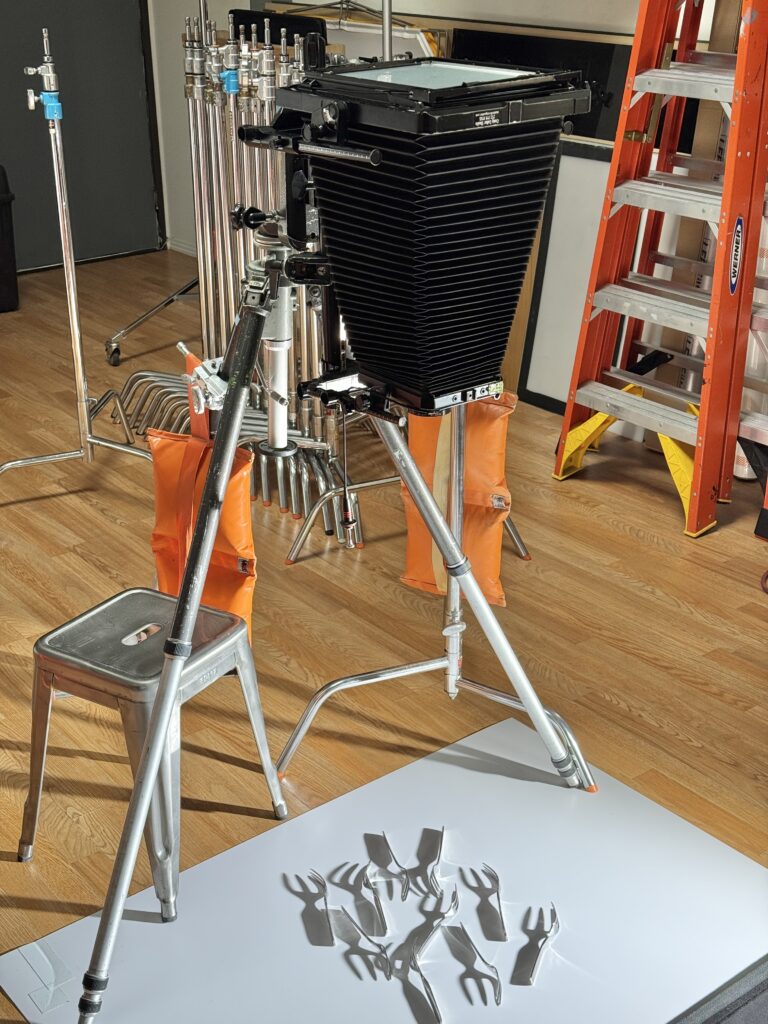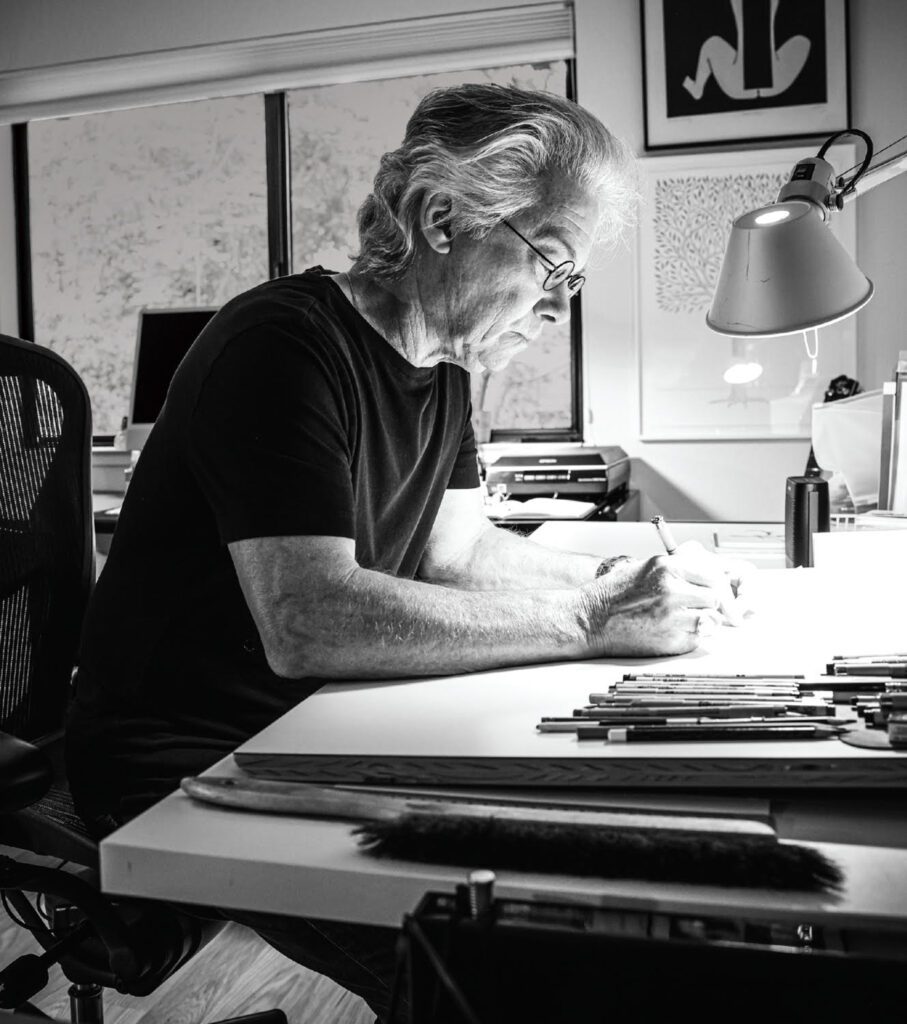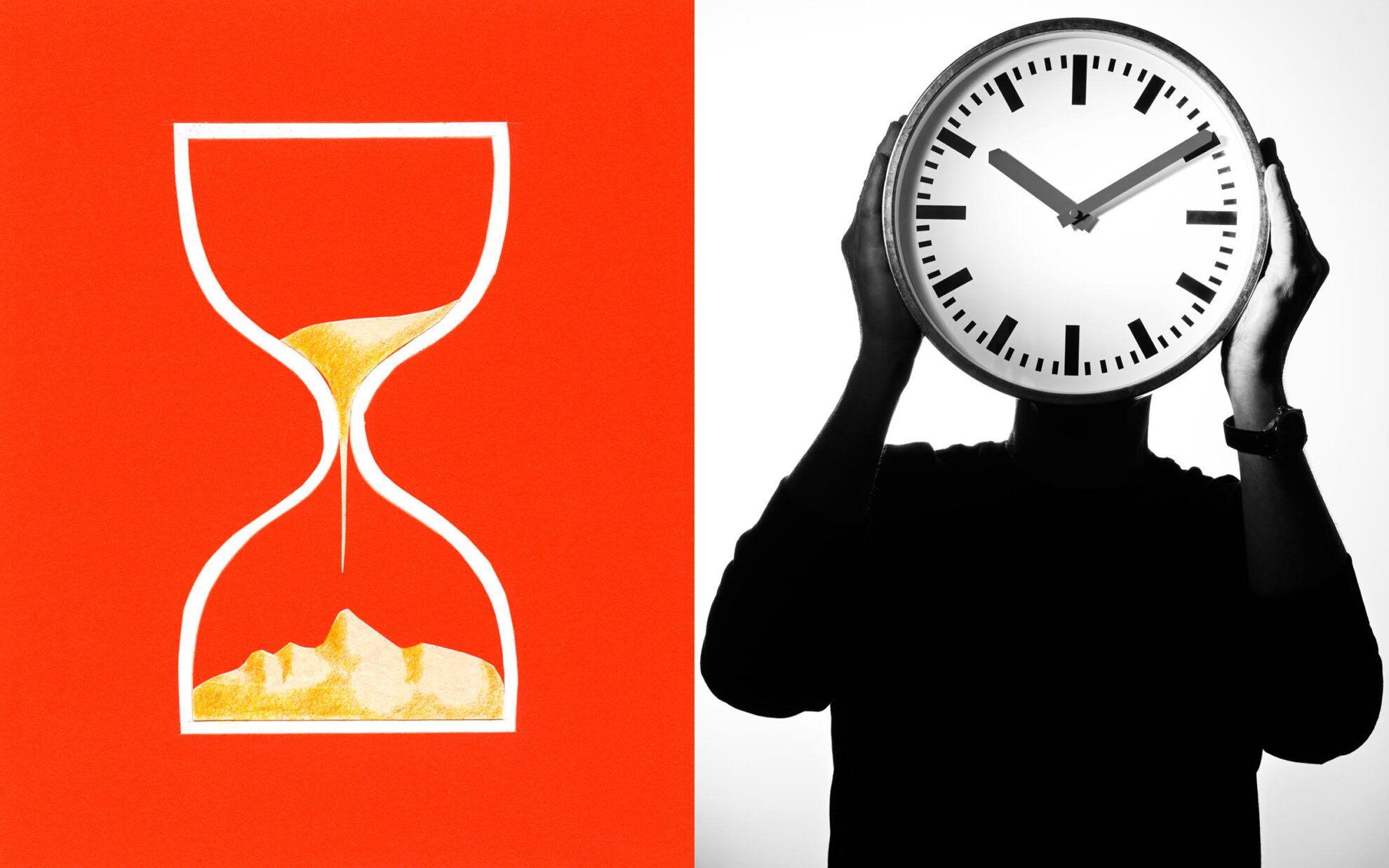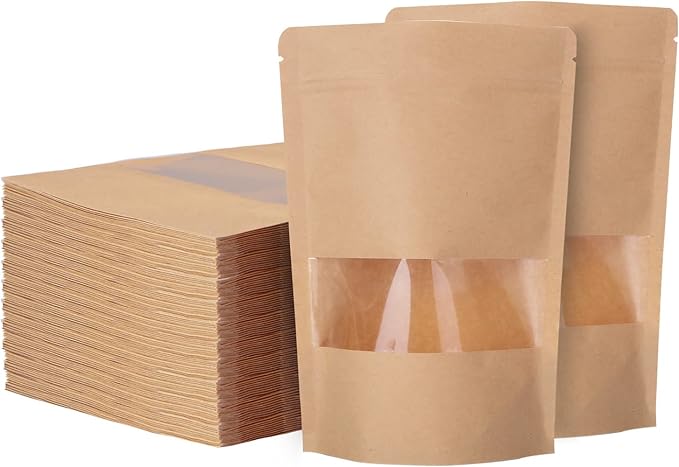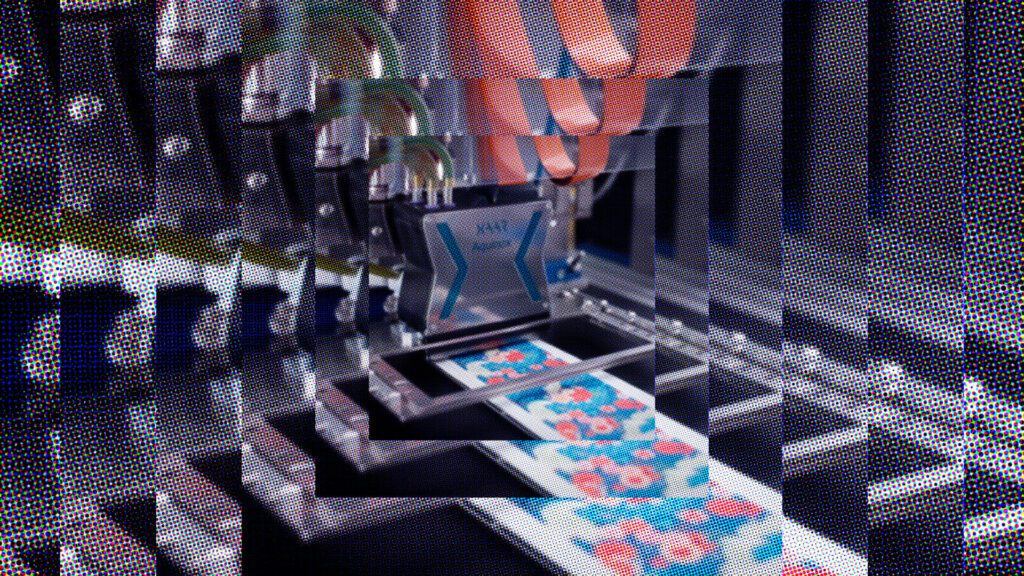They are two creatives with the same name who have never met in person. One is a photographer and the other an illustrator. Together, they are embarking on a creative project that embraces simplicity and spontaneous play. Craig Cutler and Craig Frazier have each submitted 52 words to an impartial arbiter. Every week, one of the 104 words is drawn from a Pyrex cup and delivered to both. Without conversation or insight into the other’s process, each has a week to interpret the word in their medium of choice. The responses are posted side by side on their site—and then the cycle begins again. Weekly surprise moments ensue. At times, expressions converge. The beauty of experiment incubates. We caught up with both creatives to chat about life and art, seeking inspiration and the joy of letting go.
How are you? What are you doing this morning?
CRAIG CUTLER: I’m taking my dog to get her nails clipped. We have a Vizsla that travels everywhere with us. We just came back from a trip to Northern California where we stayed at a lighthouse for a few days, doing hiking and other stuff.
CRAIG FRAZIER: This morning I will drive to Berkeley, CA to speak to the visiting students from the University of Hartford MFA illustration program headed by CF Payne. I speak to students around the country a few times a year about my career, how I work and some insight on conducting a meaningful illustration practice. I always look forward to it.
Describe your studio environment.
CC: I have had 3 major studios in NYC in my life. Each one became bigger than the other. Client rooms, conference rooms, dark rooms, etc. My latest studio is all about craft and it is extremely private, no one but myself. This is my favorite studio. I can sketch, I can paint, I can shoot without any distractions. It is also my first studio with natural skylight.
CF: At this stage in my career, I work entirely by myself. I have two studios, one in my primary home in Mill Valley and the other at our getaway cottage at The Sea Ranch on the Northern California coast. Both studios have a couple drawing boards and a computer. I’ve paired down to a small library of my favorite books, essential tools, pencils, knives, amber lith, flat files and a lot of sketchbooks. My walls have a few of my posters and a few pieces of others.
Craig F, what’s your favorite poster (or a favorite few)?
CF: Dylan by Milton Glaser, anything by Ivan Chermayeff, Willie’s Wine Bar by Cassadre, most Fukuda, most Ikko Tanaka—to name a few.
Craig C, what’s your favorite piece of still life photography (or a favorite few)?
CC: My most recent favorite still life is the cover I shot for National Geographic featuring the NASA satellite shield, inspired by origami principles. As for photographers I admire, Irving Penn has always been my go-to. He photographed portraits, fashion, and locations—he never specialized. That’s something we share in our careers: I’ve never wanted to focus on just one thing. And I’ve always loved his still lifes.
What other medium apart from photography/illustration do you like? And why?
CC: Taking portraits of our Vizsla. I take that very seriously. It’s just a fun thing to do because she always comes to the studio, and she knows when she’s going to get her picture taken.
CF: Photography as it’s been an essential part of my design career. I have both a conceptual and technical appreciation for it and those that have mastered it. I especially like classic portrait photography like Irving Penn, William Coupon, Richard Avedon. They were rooted in ‘50s and ‘60s advertising and editorial—a golden age of photography and design. I love printmaking and sculpture. Then there is still life photography of Irving Penn that never ages. There is not a contemporary photography worth a darn that is not influenced by these masters. Craig Cutler is one of the most versatile photographers I know and pays great homage to the masters in his work.
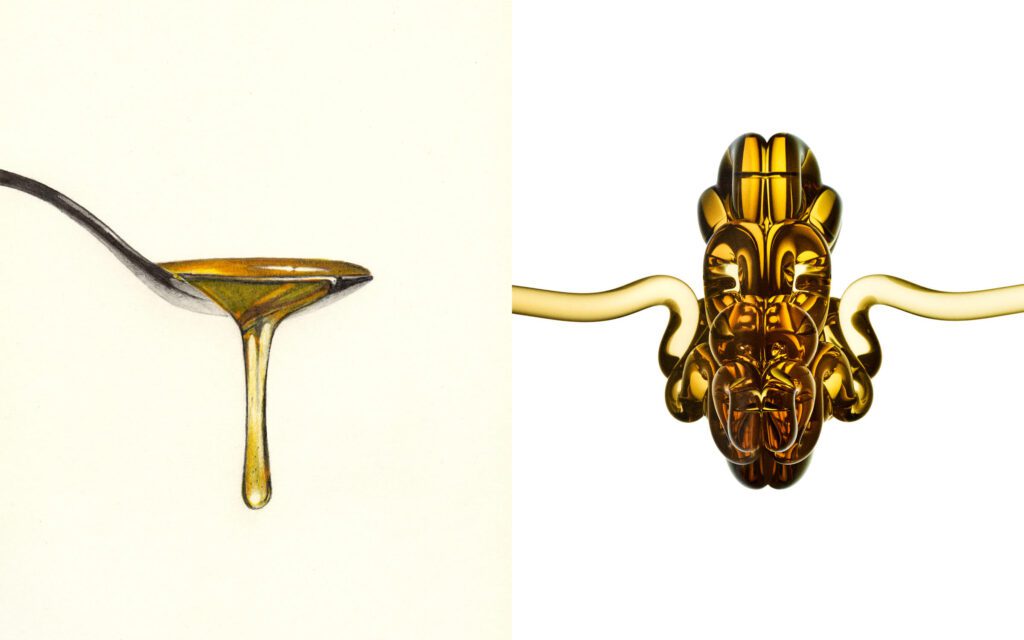
Which magazine do you first remember?
CC: Communication Arts and Graphis, for sure, during my college years. Before that, it was Life Magazine. But many magazines are pretty much gone now. Back in the day, we used to be sent out on assignments. These days, everyone’s fishing for ideas and expecting the photographer to come up with the pitch.
CF: Mad Magazine. I suppose it was a magazine for all ages but it definitely appealed to young kids—especially if you liked to draw. It was funny, satirical, sometimes obscene and always a parade of uber talented cartoonists. Contrary to magazines that my parents read like Life or Time, this magazine was entirely fun, nonsensical, and very cool. I don’t know an illustrator today that wasn’t influenced by Mad.
Craig F, tell us a bit more about your recently published magnum opus book “Drawn”: gathering over 405 illustrations and sketches spanning over 40 years. Could you talk about different levels the book plays at and how you approached the editorial process?
CF: Great question. The obvious and easy level is the collection of illustrations. That was a curating and organizing exercise. I wanted to present the best work, but more importantly, describe how it connects over the life of my career? I had to learn, in hindsight, what I’ve been pursuing. The second, and most difficult level is the editorial content. I didn’t want it to be a showy monograph about a career— rather an accessible collection of essays that tell the stories that inform how I work and have evolved over the years. Design and illustration is always a work in progress if you want to last—I asked myself questions that led to stories that indirectly explain as best as possible what I’ve been doing—and why.

Craig C, tell us about your experiences covering science and technology topics for names like The National Geographic, The Los Angeles Natural History museum and The New York Times Magazine. Can you share a memorable moment or a funny anecdote?
CC: NYTimes Magazine and GEO are completely different, but both are a privilege to work for—and incredibly hard to break into.When you’re asked to shoot for them, you don’t say no. It’s a badge of honor. I’ve had the opportunity to see and photograph places most people never will. The Natural History Museum takes the cake—I was able to create a film and imagery from their vast collection, on my own terms. Art meets science.
Craig C, I am curious about this recent project with the Natural History Foundation. Can you tell us about objects from their collection seen through your lens?
CC: I gravitated toward things I found interesting to photograph. I spent a week scouting the collection to find exactly what I wanted to shoot.I love capturing objects that draw you in—things that make you want to understand what they are. It’s important for me to stay true to my style and present these artifacts as they are, without any gimmicks.We also created a film that plays on a 16×9-foot monitor, looping for five minutes. Museums around the world are struggling to attract visitors, and this was one way to refresh the experience and spotlight the collection in a modern way.
Craig F, in the opening of “Drawn” you mention two parts of your career; you began as a graphic designer who liked drawing and then you became an illustrator that knows how to design. Could you reflect back a bit on those two Craigs?
CF: My graphic design career was always informed by my ability to draw. I have a fondness for trademarks and poster design because they afford—or require—an ability to draw. Drawing teaches us to see better, which in turn, makes us create better imagery. Even if I hired an illustrator earlier in my career, I had a leg up on what I expected of them and how to communicate with them. The same goes for photographers. If you can draw, you can sketch concepts and directions for both your client and your photographer. It has been immeasurably valuable to me. When I switched to illustration full time, I did it with 20 years of design experience. That’s not just learning to design the page but learning the greater context in which design works—and how to make it more purposeful. I learned how to ask the right questions and understand—and in many cases— establish the communications objectives. There is not an illustration job that I’ve taken on that I have not had to understand the task I’m trying to satisfy. All of that contributes to better work.
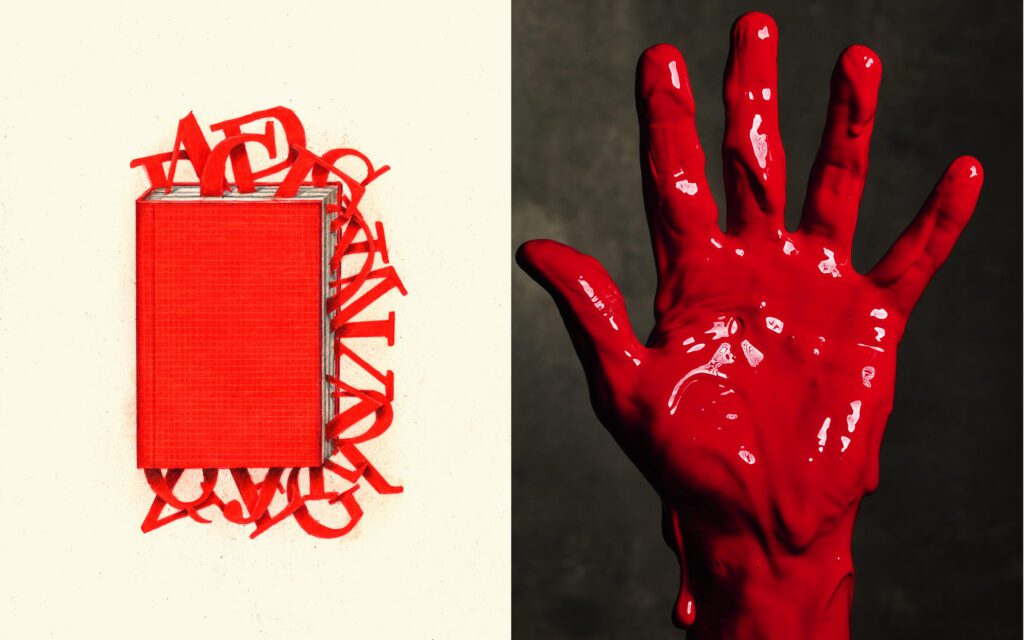
What has the process of working on the project with the other Craig taught you about your work and making stuff?
CC: This is the best project ever. I feel like a student again trying to make the cut to move forward in the design department. We take this very seriously. I do not want to embarrass myself in front of one of the best illustrators I know. The deeper we get into the project, the more conceptual the work becomes. We’re getting freer, aiming for less obvious ideas—and resisting the urge to run with the first one.
CF: I’m not sure I have a complete understanding of it yet, as we are still feverishly trying to get out an image a week. I can say that I’ve learned to trust my intuition even more and that I have a pretty deep pool of imagery in my bank. The best lesson so far is that simple solutions are still the best—and that the motivation to make good work is deeply personal and is a fire that must be fed.
What are some of the conversations that you’re hoping this blind encounter can open up? Or the takeouts you are hoping your viewers can have?
CF: I would love people to get excited about ideas and understand that they stem from an urge to play and beg questions. This project is without worried input and the influences that so frequently contaminate commercial work. When you eliminate fret, things can breathe and happen in new ways. I think there are lessons in this—both for the two Craigs and the audience. As for takeouts, I hope viewers get some sense that ideas are plentiful if you look in the right places—and that job one is to make the simplest ideas interesting.
CC: So many projects with clients have watered down results because they are trying to please everyone. What makes this project fun is that we can only answer to ourselves and can only see the final results for the first time together.
As I pour through the 2Craigs image library you’ve created so far, my mind drifts through different pairings, trying to unravel the words that tie them together. Most of the time, it’s nearly impossible—and I love how far you both take it! Let’s talk about moments where your motives seem to overlap, like in Week 33 (“Fruit”). You both chose lemon—what’s the story there?
CC: Well to be honest, I like the ones where we are completely on opposite sides of the spectrum. This was purely coincidence. The deeper we go into this project the more abstract I want my solution to be.
CF: We are as delighted—and surprised—as you. It’s mind-blowing that of all the fruits, we both picked lemons. (33 Fruit) There are independent and different explanations that each of us will have. Same goes for 46 Thick—both of us landing on dripping honey is almost a creepy coincidence. Equally delightful is our dramatically different ideas which happen throughout the project. For example, 43 Intersect, 34 Tight, and 14 Layer could not be more different—yet both spot on as powerful solutions. We have a shared aesthetic that has shown up throughout this project—in the similarities and the differences.
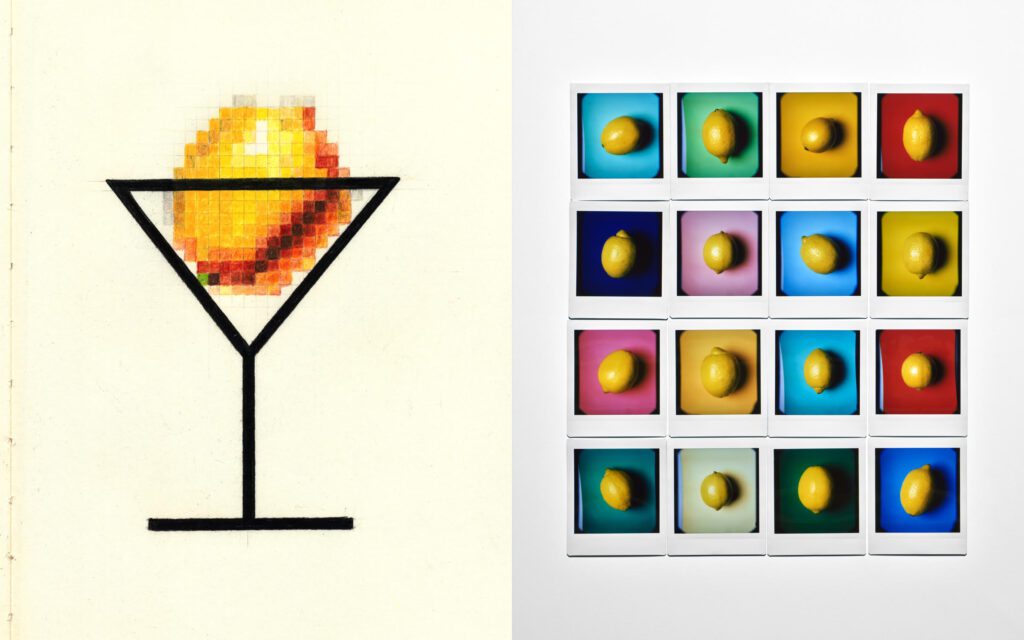
Then there are the more divergent approaches in Week 42 (“Puncture”) and Week 40 (“Quiet”). Do you think abstract prompts invite this kind of experimentation? Or is it more a matter of daily mood, phases of the moon…
CC: Daily mood for sure ! You could give me the same word everyday and I would have a different solution each time. I am a very moody person.
CF: Yes, sometimes the word lends itself to more far-ranging interpretations, for instance, I find the adjectives the most challenging and often result in the coolest answers. “Quiet” was a great word because it’s entirely descriptive. I resorted to an idiom, “so quiet, you could hear…” and Craig recalled his childhood in church. Of course, his photograph of that experience was sublime.
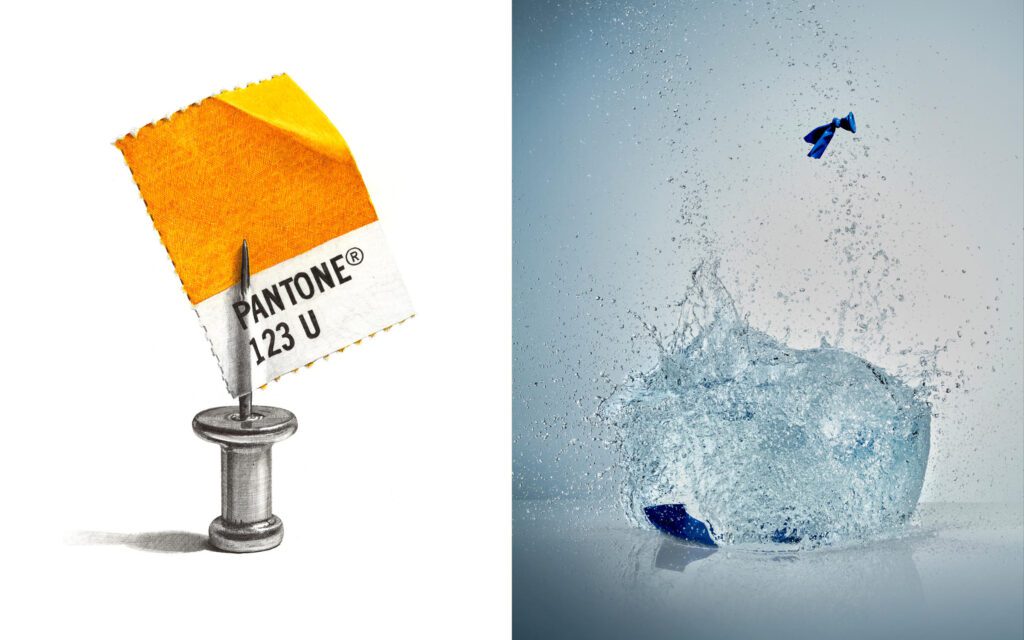
Craig C, the moment captured in the bursting balloon is absolutely stunning. What’s the story behind that image?
CC: It’s fun to blow up objects! In this case I used a sound trigger and a light that freezes objects at 10,000 of a second. It is also fun to capture images the human eye cannot see. In my perfect world the 2CRAIGS would be an agency that only accepts clients who allow us to do what we want without any revisions. Think about it? Every project gets two ideas and who knows…maybe we still will never meet in person.
Craig F, I don’t want to overinterpret, but it seems like you love playing with everyday objects—building entire worlds by manipulating scale. Is that something you’re consciously exploring?
CF: That is an accurate observation. I have an appreciation for the common objects of our lives and love the challenge of describing them heroically and in the most interesting light. Elegance lies within the mundane if looked at the right way.
